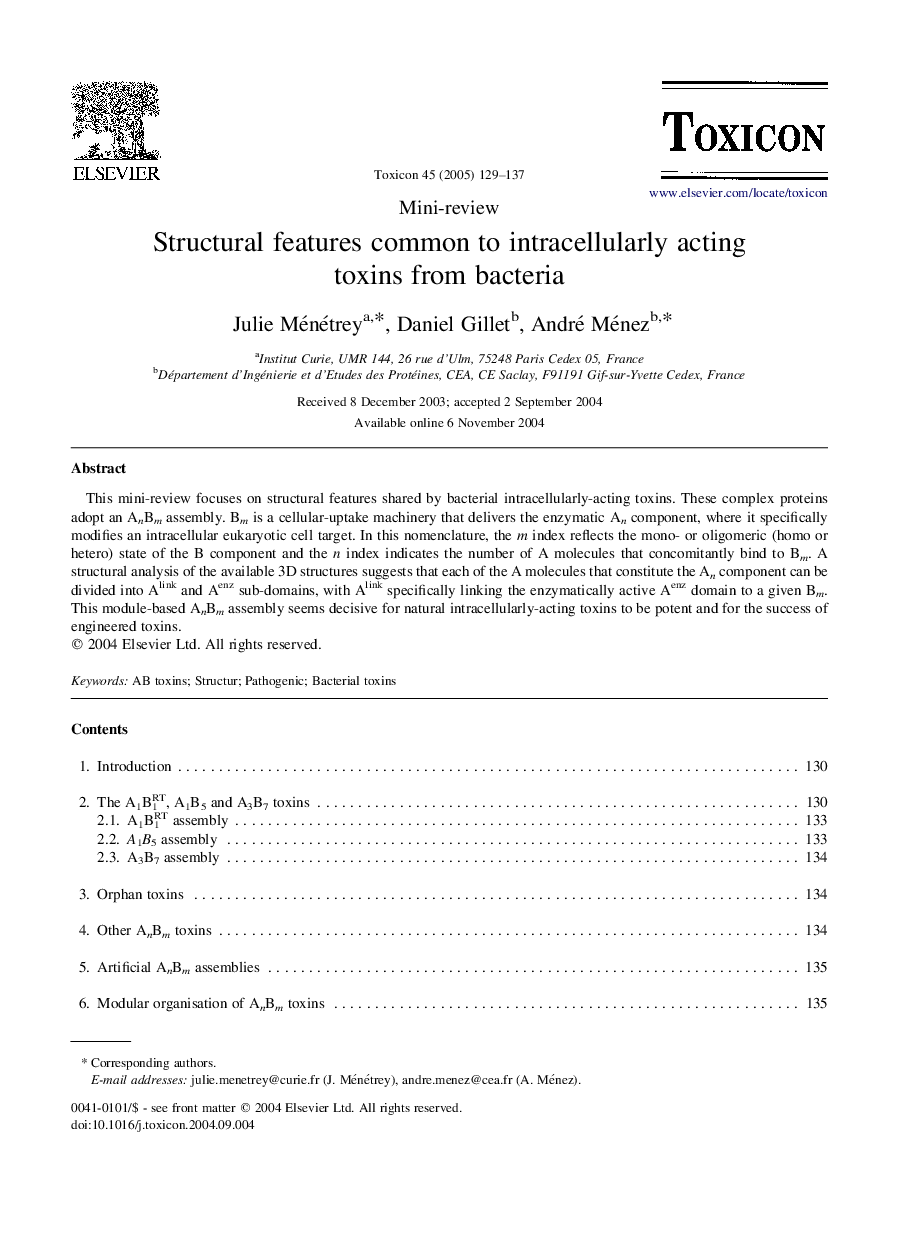| Article ID | Journal | Published Year | Pages | File Type |
|---|---|---|---|---|
| 10880759 | Toxicon | 2005 | 9 Pages |
Abstract
This mini-review focuses on structural features shared by bacterial intracellularly-acting toxins. These complex proteins adopt an AnBm assembly. Bm is a cellular-uptake machinery that delivers the enzymatic An component, where it specifically modifies an intracellular eukaryotic cell target. In this nomenclature, the m index reflects the mono- or oligomeric (homo or hetero) state of the B component and the n index indicates the number of A molecules that concomitantly bind to Bm. A structural analysis of the available 3D structures suggests that each of the A molecules that constitute the An component can be divided into Alink and Aenz sub-domains, with Alink specifically linking the enzymatically active Aenz domain to a given Bm. This module-based AnBm assembly seems decisive for natural intracellularly-acting toxins to be potent and for the success of engineered toxins.
Keywords
Related Topics
Life Sciences
Biochemistry, Genetics and Molecular Biology
Biochemistry, Genetics and Molecular Biology (General)
Authors
Julie Ménétrey, Daniel Gillet, André Ménez,
